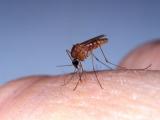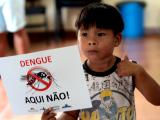May 12, 2004 (CIDRAP News) The dengue fever epidemic in Indonesia has subsided after 58,301 cases were reported in 4 months, which rivaled the pandemic year of 1998, according to the World Health Organization (WHO).
There were 658 deaths among cases of dengue fever and dengue hemorrhagic fever reported from January through April, the WHO said yesterday. The case-fatality rate of 1.1% was lower than in previous years, officials said.
A dengue pandemic in 1998 caused 1.2 million cases in 56 countries, the WHO reported. That year, Indonesia had 72,133 cases and 1,414 deaths, the agency said, adding, "The outbreak in Indonesia this year appears to be of similar magnitude." As in 1998, Dengue 3 appeared to be the predominant virus serotype this year.
Unusual numbers of cases were reported in 293 cities and parts of 17 provinces this year, the WHO said. All 30 provinces were affected by the outbreak. The vast majority of casesabout 52,000occurred from January through March, according to previous reports.
"At the end of April the situation has returned to normal with all provinces reporting cases at a low level," the WHO said. "Jakarta, Bali and Nus Tenggarah Timur, which were among the most affected provinces, are still being monitored closely."
Elsewhere, Vietnam had 8,784 dengue cases in the first 4 months of this year, a 47% increase from last year, according to an Agence France-Presse (AFP) report today. The cases included 14 deaths.
More than 93% of the cases were in the Mekong Delta in southern Vietnam, where moist conditions provide ideal breeding grounds for mosquitoes, the AFP reported. The story said large outbreaks of the disease tend to occur every 4 or 5 years.
Dengue fever is a flu-like illness involving headaches, rashes, cramps, and back and muscle pain. Symptoms last about 2 weeks, and the disease can be fatal if supportive treatment is delayed. Dengue hemorrhagic fever, a potentially deadly complication, is characterized by high fever; hemorrhagic phenomena, often with enlargement of the liver; and in severe cases, circulatory failure.
See also:
May 11 WHO statement
http://www.who.int/csr/don/2004_05_11a/en/



















